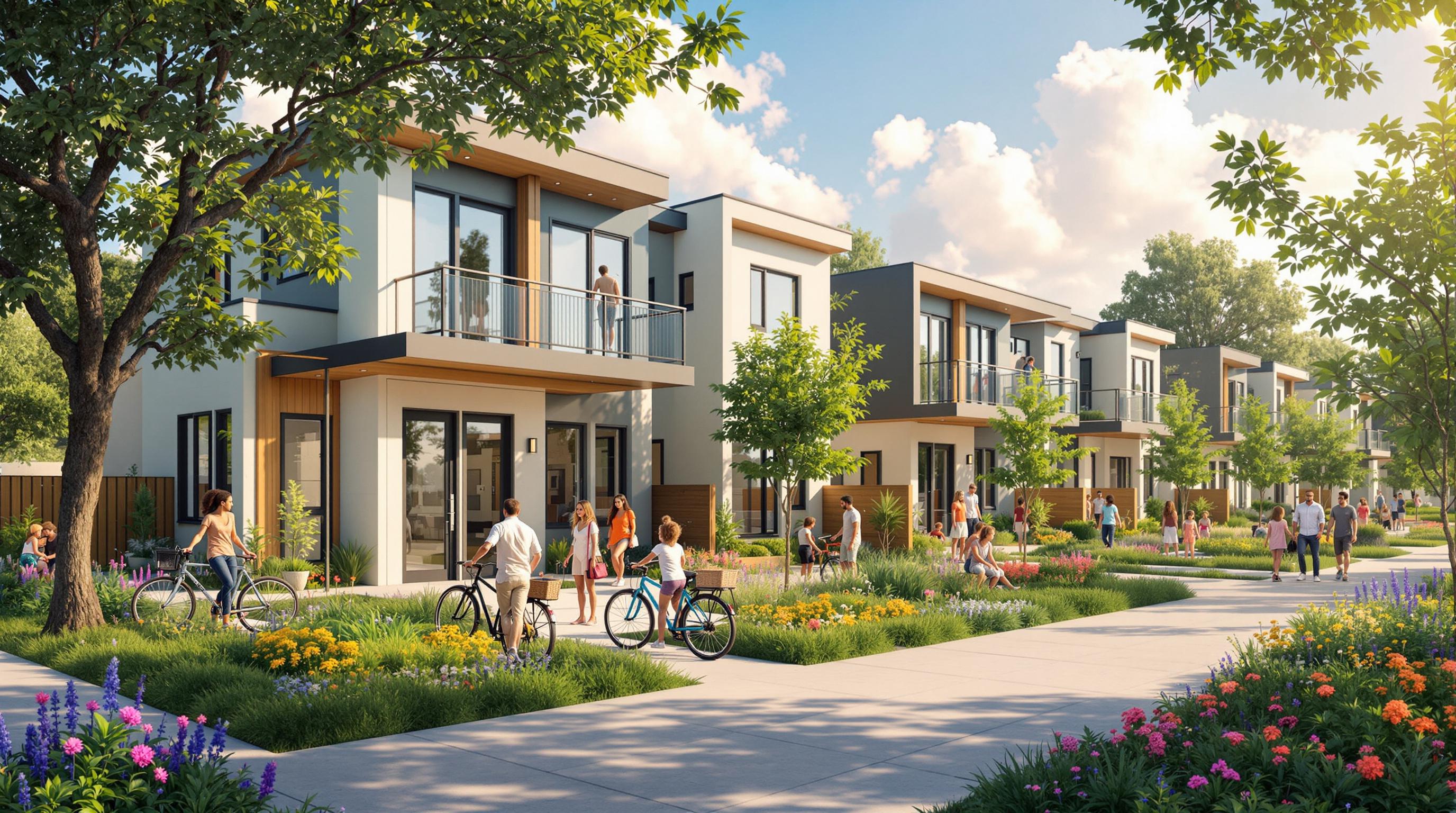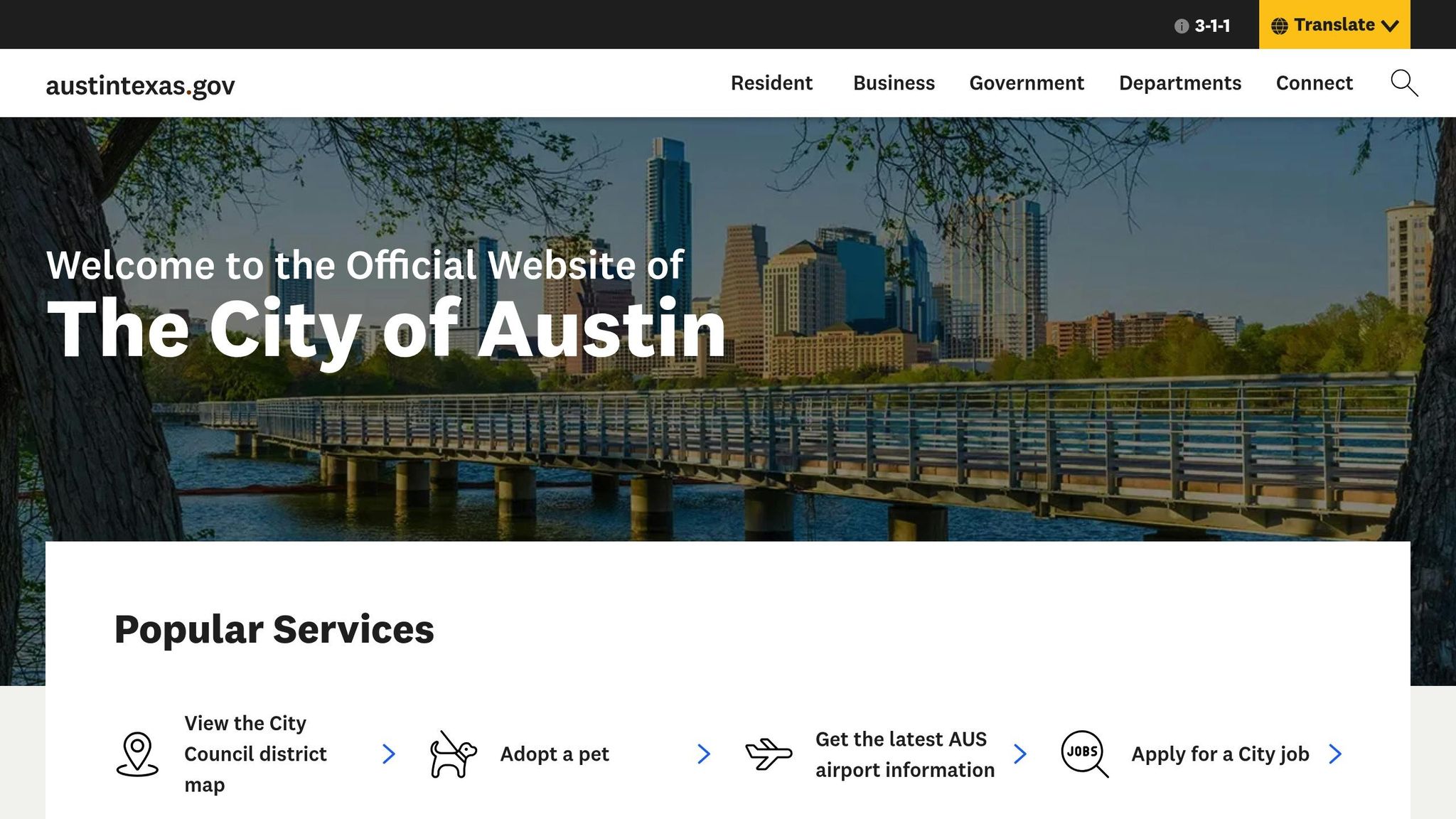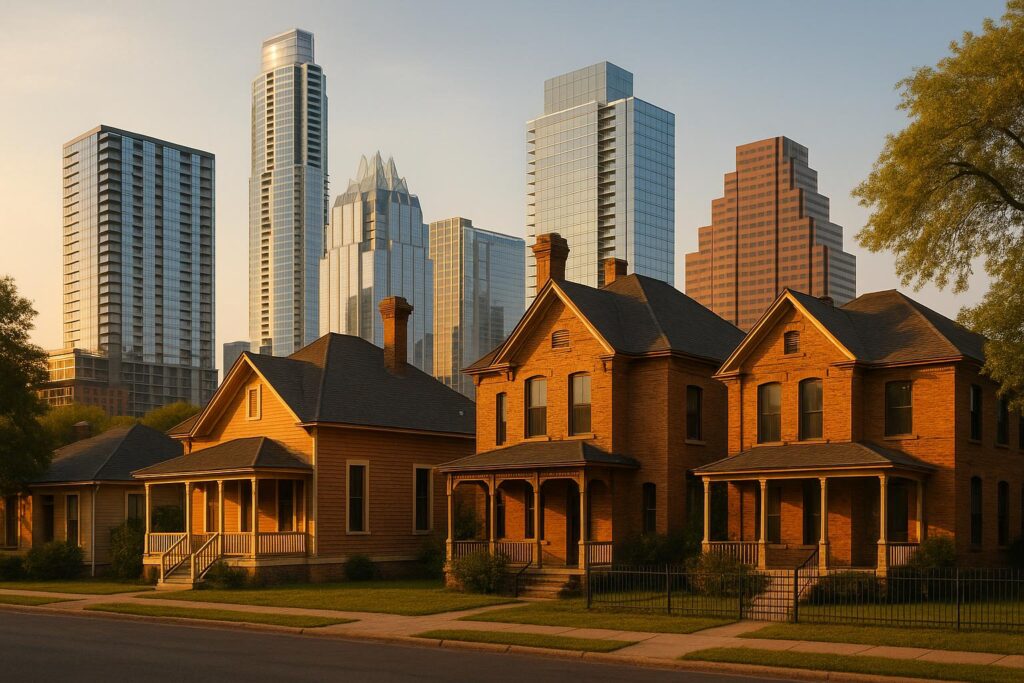Austin is tackling its housing challenges with new 2025 land-use rules. These updates allow homes on smaller lots, making housing more affordable and increasing urban density. Here’s what you need to know:
- What Changed: Smaller lots now permitted for residential construction, allowing multiple units where only single-family homes were allowed before.
- Why It Matters: This shift aims to lower housing costs, boost housing supply, and reduce urban sprawl.
- Key Benefits: Better land use, more housing options near transit, and reduced environmental strain.
- Challenges: Increased density means Austin needs infrastructure upgrades, like transportation and utilities.
Quick Comparison:
| Aspect | 2025 Rules | Pre-2024 Rules |
|---|---|---|
| Housing Costs | Smaller lots, lower costs | Larger lots, higher costs |
| Housing Density | Multiple units on lots | Single-family homes only |
| Environmental Impact | Compact, less sprawl | Spread-out, more resource use |
| Community Impact | Diverse housing, walkability | Car-dependent, fewer housing options |
These changes are reshaping Austin’s neighborhoods, offering more housing options while requiring careful planning for infrastructure updates.
Minimum lot sizes reduced in Austin to boost housing …
1. New Rules for 2025
Austin’s 2025 land-use regulations bring a major shift to residential development, focusing on affordability and increasing housing density. These updates overhaul long-standing rules to address the city’s growing needs.
The new zoning rules allow for more housing units on lots that were previously limited to single-family homes. This change is particularly impactful near transit corridors, where better accessibility and higher demand open the door for a wider range of housing options.
To support this increased density, the regulations also require upgrades to community infrastructure. They include guidelines for architectural design, green spaces, and parking adjustments, aiming to create affordable neighborhoods that blend seamlessly into the existing community.
sbb-itb-4c99469
2. Previous Rules Before 2024
Before 2024, Austin’s land-use rules placed strict limits on development and housing density. These regulations required large lot sizes and prioritized single-family homes, making it harder to build affordable multi-unit housing. This approach created a clear barrier to denser, more cost-effective development.
Neighborhoods like Travis Heights and Bouldin Creek were particularly affected. The zoning rules in these areas blocked the construction of smaller, more affordable homes, leaving residents with fewer housing options. Even areas near public transit faced similar restrictions, limiting development and reinforcing car dependency.
These policies contributed to rising housing costs, inefficient land use, and urban sprawl, which had negative effects on the environment. This outdated framework eventually paved the way for major reforms in 2024, which introduced more flexible, density-focused regulations that continued evolving in 2025.
Benefits and Drawbacks
Let’s break down the key differences between Austin’s updated land-use rules for 2025 and the older regulations. This comparison highlights both the improvements and challenges:
| Aspect | 2025 Rules | Pre-2024 Rules |
|---|---|---|
| Housing Costs | Smaller lots reduce land and construction expenses, making homes more affordable. | Larger lot sizes drove up costs and limited the availability of affordable single-family homes. |
| Density Effects | The updated rules allow multiple units on lots previously restricted to single-family homes, increasing density and making better use of urban land. | Earlier zoning restricted areas to single-family homes, limiting density and land efficiency. |
| Environmental Impact | Compact developments help curb urban sprawl and use resources more efficiently by concentrating infrastructure. | Spread-out developments required extended infrastructure and higher resource use per person. |
| Community Impact | A wider range of housing options encourages diversity and walkability, though some areas face parking and infrastructure adjustments. | Uniform housing options supported car-dependent lifestyles, with ample parking but fewer housing choices. |
The updated 2025 rules are already influencing how Austin develops. Smaller lots and flexible zoning are creating new opportunities for first-time buyers. In some neighborhoods, increased construction activity is prompting officials to evaluate and update infrastructure.
Builders are also adapting to the changes. While there are some short-term hurdles, city planners anticipate that these denser developments will expand housing options and bring more variety to neighborhoods.
Next, we’ll dive into key findings and what these changes mean for Austin’s future.
Key Findings and Future Effects
The updated land-use rules are set to reshape Austin’s urban landscape, with the 2025 policies driving noticeable changes in the housing market. Recent construction trends highlight a move toward denser, more efficient land use, particularly in areas that were previously low-density. By 2026, Austin’s skyline is expected to reflect these shifts as developers adjust to smaller lot sizes and new zoning requirements.
Experts predict three main outcomes:
- Housing Supply: Allowing smaller lots is expected to increase the number of housing units in targeted areas.
- Price Adjustments: A rise in housing inventory could help ease prices in central neighborhoods where demand is high.
- Infrastructure Changes: Higher population density will require updates to transportation, water systems, and other essential services.
These changes highlight a move toward urban growth that balances current market needs with future community planning. As neighborhoods transform to support higher-density living, thoughtful planning and active community involvement will play a key role in ensuring a smooth transition.






